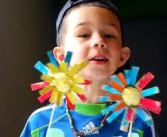
It’s adoption week, which seems a good time to think about the challenges and privilege of parenting.
Parenting is hard!
All parents need support and all of us parents find the task and honour of raising children has significant ups and downs alongside frequent feelings of exhaustion and confusion!
I often mention both in my own role as a mum of four and in my work life as psychotherapist, that I think that each child should be born with a handbook that pops out after the placenta which specifies what kind of personality the child has, how sensitive they are, how creative they will be, what their primary interest will be and therefore what would be the best use of extra curriculum money and time and what skill will be ignored in adulthood! Sadly this doesn’t happen and so we all try our best and sometimes misread and misunderstand our kids as we get to know them as they develop their own unique personality and opinions!
Some children have lives which are simple and they seem to enjoy everything and flourish in pre school, school and hobbies. Some find things challenging and we spend hours and days wrestling with the questions of why they struggle to play with others, eat at mealtimes, toilet train at the right time or read and write. As parents we seem to often struggle with guilt that we may be missing something or that there is a reason for our child to be struggling in some ways. Many of us will experience anxiety as we drop off our child at pre school, their first sleepover or at their new friend’s house. It’s not an easy, or simple ride for most of us, but a journey full of surprises and learning as we go along.
When children have hard times
When children have been experienced challenges along the way, we know that there is an impact. It could be a school move, house moves, being bullied or teased, not flourishing in a sport or other passion, and we need to call on all our resources to navigate them through these experiences with minimal negative impact and even possibly increased internal strength, self-awareness and knowledge.
When we adopt children, we know they have been through many challenges. Often they have been through far too many challenges that no baby or child should have to experience, whether that is pre-birth womb anxiety or early childhood turmoil that led to the need for adoption. We know that these challenges, or traumas have had an impact on them and we hope that our love, kindness, nurture and practical provision will heal these internal wounds.
Neuroscience is now giving us evidence that the impact of these challenges and traumas is complex and due to the fact that the turmoil that they often experiences was pre-verbal, there are usually no words for them to use to express the feelings that always accompany trauma. This means that their behaviour becomes the primary source of communication, rather than words, and this can often be misunderstood as naughtiness.
Current support for adoptive parents
I had assumed that all adoptive parents were given the information and knowledge that I love to give to those who come to my Introduction to Trauma training days and read my books. I have certainly worked with some fabulous adoptive parents who have been given training, have been given books and have been supported along the way as they parent their children.
I have a celebrity friend however, who has not had this support. She adopted two children and gave them everything that she could to enable them to experience a positive and healthy family life. In the journey of parenting she has not been given training on the impact of trauma, book recommendations or resources to support her in parenting but instead has seems to have had professionals judge, make assumptions, misunderstand and shame her. I have been shocked by the responses of professionals to her asking for advice when her adoptive children displayed behaviour that began to show that their pre-verbal trauma was beginning to impact them during adolescence. Professionals appear to have made shocking assumptions of her parenting, which by all standards, was very loving, including popular methods of discipline like using the naughty step to reflect on behaviour. She was surprised by how these methods were not hugely effective and sometimes seemed to be like adding fuel to a match and yet not one professional explained to her the impact of trauma and the need to have specific parenting approaches.
Sadly in this case, and others I have heard of, the children were taken away from their adoptive parents on a spiral of misunderstanding and/or miscommunication, too little time to really get to know the parent to find out what is going on and too little time and resources to train, equip and educate adoptive parents on the impact of trauma and the complexity of pre-verbal trauma. I have also found that if professionals aren’t specifically trained on how to work with trauma there can often be reactionary assumptions made and poor support given to the family to navigate the situation together.
The impact of this specific fast moving situation with a celebrity adoptive parent who just asked for help from professionals, whose responses then demonstrated misunderstanding and judgement, led to this parent becoming anxious, the children becoming anxious and therefore escalating trauma symptoms.
From an outside observer, it is obvious that these trauma symptoms were not caused by parenting behaviours such as encouraging the children to eat healthy food and being told to be on the naughty step when they were presenting with challenging behaviour, but were due to subconscious traumatic memories that were bubbling to the surface due to both adolescence, the sudden presence of professionals in the house asking questions and the subsequent sudden anxiety in the home.
Now we have a loving mother who has to watch her children living in foster homes where there doesn’t seem to be enough food, the lack of attention to detail is breaking her heart and her kids are becoming increasingly unhealthy. She is powerless to help and yet is reading and learning about the impact of trauma so that she can repair the trauma that has been caused by this horrific situation as well as the original trauma that the children had before they were adopted.
We need to resource adoptive parents
We need to provide trauma training for all adoptive parents (and professionals) and we then need to ensure that they are supported in a non-judgemental, non-shaming way that assumes that they are trying their best, just like the rest of us. We cannot stand by and let more families be split apart from lack of knowledge and then professionals lack of empathy and perception.
I am now committed to offering more free training places on my courses to adoptive parents who haven’t had any other training in the impact of trauma and attachment.
Betsy de Thierry. MA. Psychotherapy and counselling; B.Ed (hons) Dip couns; PG.Dip Play Therapy; Dip Life coaching; MBACP.
Author of books on trauma: A Simple Guide to Child Trauma; Teaching the Child on the Trauma Continuum.
Director of Trauma Recovery Centre UK
Director of BdT Ltd Training and Consultancy

 ng that they need help, often causes them to get labeled as defiant, bad or naughty and then they often get treated as if they are naughty or bad. This can makes them feel bad inside and rejected and worthless. They can lose the ability to see their gifts or talents and just see themselves as others see them because of their behaviour.
ng that they need help, often causes them to get labeled as defiant, bad or naughty and then they often get treated as if they are naughty or bad. This can makes them feel bad inside and rejected and worthless. They can lose the ability to see their gifts or talents and just see themselves as others see them because of their behaviour. Children and young people are dependent on adults understanding this and offering skilled and effective support to enable them to break the trauma cycle and process their strong feelings.
Children and young people are dependent on adults understanding this and offering skilled and effective support to enable them to break the trauma cycle and process their strong feelings.


